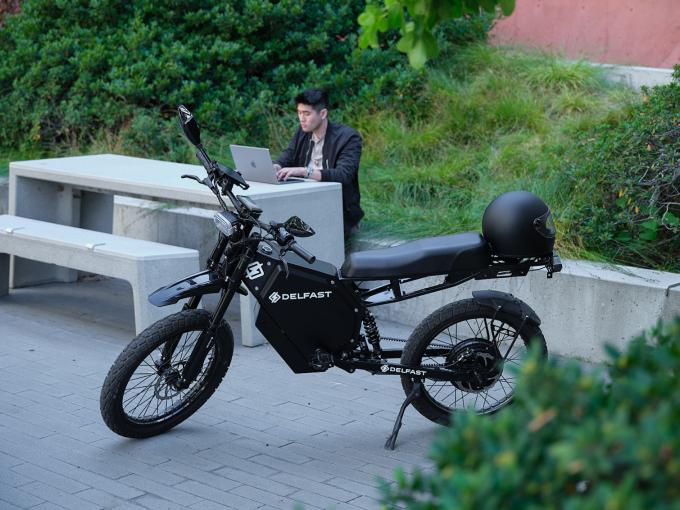
The invention and wide use of the controller has helped the eBike industry explode in recent years. The controller is the CPU (central processing unit) of the eBike that receives power from the battery and transfers it to all the various components of the bike along with signals giving specific instructions for which functions to perform.
The Delfast | My eBike Ride app, for example, communicates over WIFI, Bluetooth and 4G connections signaling the hyper-intelligent controller to perform a host of functions. E-bikes have different types and levels of sophistication when it comes to controllers based on the functions they are expected to perform.
Most eBikes being sold today use brushless motor controllers, though some do still use brushed motor controllers. In simplest terms, a controller is the brain of the eBike. It receives information from the parts and translates that information in real-time to relay signals to the different components of an eBike. Some controllers may only be responsible for the acceleration of the eBike, or when using the pedal assist system. Other more advanced controllers, such as the one inside the Delfast Top 3.0i, that have more processing power, can control a wide array of features using inputs and outputs and complex algorithms.
Twist the throttle and the signal travels to the controller and is relayed almost instantly down to the in-hub motor to accelerate or decelerate. Set the level of pedal assistance and it will communicate to the motor how much assistance to give a rider based on the resistance detected or the algorithm programmed into the controller. The controller can communicate between all the connected components and the platforms that are at your fingertips, such as: the throttle, pedal assist levels, regenerative braking, speed modes, and the connected displays and apps. The more advanced the controller, the more functions it can handle.
To understand controllers, it’s also helpful to understand the motors that they are used to control. The two main types of motors in use for electric bicycles are brushed motors and brushless motors. Both are DC motors. Both motors use a set of positively and negatively charged magnets, though they do so in different ways.
The brushed motor uses electromagnetically charged coils of wire on a rotor. When current is applied it is alternately attracted and repelled by the opposing fixed magnets (the stator) to make the rotor turn as brushes keep contact and conduct the current that keeps the rotor spinning. This was the DC motor in use for many years and is still in use for numerous applications, including power tools like impact drills and electric screwdrivers, as well as various smaller motors inside appliances. It was among the first types of motor used in electric bikes. The main drawback of the brushed motor can be seen in its name. The brushes must have a contact point which creates friction that over time causes the brushes and surfaces to wear out and need maintenance. Brushed motors also tend to be heavier than newer brushless motors.
Brushless motors are not only much lighter, but because they don’t have brushes creating constant friction, which causes slowing and heat buildup, they tend to last much longer and require much less maintenance. Since brushless motors don’t have brushes to conduct electricity through contact, they require more advanced controllers to precisely control the amount of energy sent to negatively or positively charge the coils that then attract a moving set of oppositely polarized magnets. This ability to precisely control current through algorithms and sensors set to detect minute changes means the controller can detect when a motor slows or speeds up and can add or reduce the exact amount of power needed. This not only makes a more accurate motor but reduces wastes of energy leading to longer battery life and overall motor life.
Why is this information important? Knowing the evolution of technology from brushed motor to brushless motor, and then the continuing evolution and advancement of the technology inside controllers allows us to predict the ways in which technology will change how we live. We are huge geeks for technology here at Delfast. The controller inside the brushless motor has wide applicability in other technologies of interest.
An exciting example is the use of controllers and brushless motors inside of the hubs of wheelchairs. Having a controller that can gauge the amount of force needed versus the amount of force being used to push a wheelchair up a hill means the controller can communicate to the hub motors the need for assistance without having to push a button. These exciting leaps forward in technology can make our lives not only easier but more accessible and enjoyable as well.